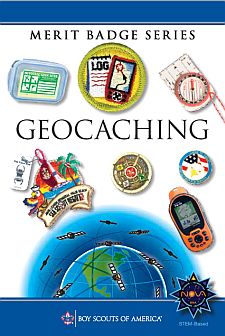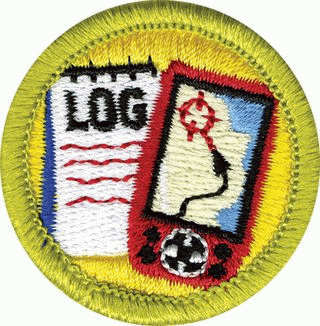- Do the following:
- Explain to your counselor the most likely hazards you may encounter while participating in geocaching activities and what you should do to anticipate, help prevent, mitigate, and respond to these hazards.
- Discuss first aid and prevention for the types of injuries or illnesses that could occur while participating in geocaching activities, including cuts, scrapes, snakebite, insect stings, tick bites, exposure to poisonous plants, heat and cold reactions (sunburn, heatstroke, heat exhaustion, hypothermia), and dehydration.
- Discuss how to properly plan an activity that uses GPS, including using the buddy system, sharing your plan with others, and considering the weather, route, and proper attire.
- Discuss the following with your counselor:
- Why you should never bury a cache.
- How to use proper geocaching etiquette when hiding or seeking a cache, and how to properly hide, post, maintain, and dismantle a geocache
- The principles of Leave No Trace as they apply to geocaching
- Explain the following terms used in geocaching: waypoint, log, cache, accuracy, difficulty and terrain ratings, attributes, trackable. Choose five additional terms to explain to your counselor.
- Explain how the Global Positioning System (GPS) works. Then, using Scouting’s teaching EDGE, demonstrate the use of a GPS unit to your counselor. Include marking and editing a waypoint, changing field functions, and changing the coordinate system in the unit.
- Do the following:
- Show you know how to use a map and compass and explain why this is important for geocaching.
- Explain the similarities and differences between GPS navigation and standard map reading skills and describe the benefits of each.
- Explain the UTM (Universal Transverse Mercator) system and how it differs from the latitude/longitude system used for public geocaches.
- Show how to plot a UTM waypoint on a map. Compare the accuracy to that found with a GPS unit.
- Describe the four steps to finding your first cache to your counselor. Then mark and edit a waypoint.
- With your parent's permission*, go to www.geocaching.com. Type in
your zip code city and state
to locate public geocaches in your area. Share the posted information
about three of those geocaches with your counselor. Then, pick one of
the three and find the cache.
*To fulfill this requirement, you will need to set up a free user account with www.geocaching.com. Ask your parent for permission and help before you do so. - Do ONE of the following:
- If a Cache to Eagle® series exists in your council, visit at least three of the 12 locations in the series. Describe the projects that each cache you visit highlights, and explain how the Cache to Eagle® program helps share our Scouting service with the public.
- Create a Scouting-related Travel Bug® that promotes one of the values of Scouting. "Release" your Travel Bug into a public geocache and, with your parent's permission, monitor its progress at www.geocaching.com for 30 days. Keep a log, and share this with your counselor at the end of the 30-day period.
- Set up and hide a public geocache, following the guidelines in the Geocaching merit badge pamphlet. Before doing so, share with your counselor a six three-month maintenance plan for the geocache where you are personally responsible for the first those three months. After setting up the geocache, with your parent's permission, follow the logs online for 30 days and share them with your counselor. You must archive the geocache when you are no longer maintaining it.
- Explain what Cache In Trash Out (CITO) means, and describe how you have practiced CITO at public geocaches or at a CITO event. Then, either create CITO containers to leave at public caches, or host a CITO event for your unit or for the public.
- Plan a geohunt for a youth group such as your troop or a neighboring pack, at school, or your place of worship. Choose a theme, set up a course with at least four waypoints, teach the players how to use a GPS unit, and play the game. Tell your counselor about your experience, and share the materials you used and developed for this event.
BSA Advancement ID#:
145
Requirements last updated in:
2019
Pamphlet Publication Number:
35836
Pamphlet Stock (SKU) Number:
610765
Pamphlet Revision Date:
2016
|
|||||||
Page updated on: November 18, 2021









